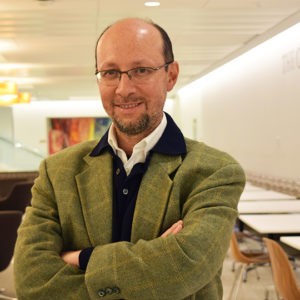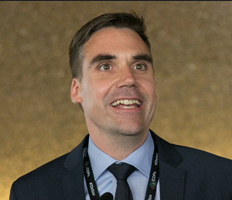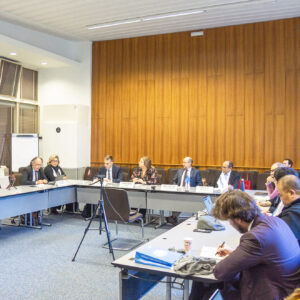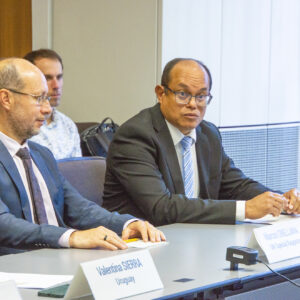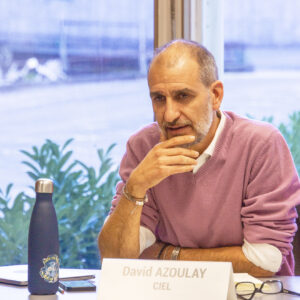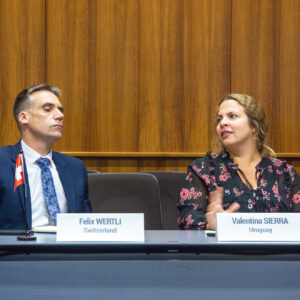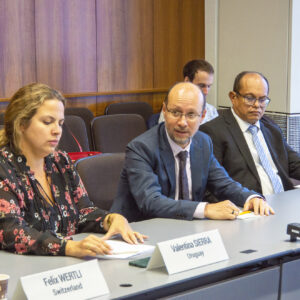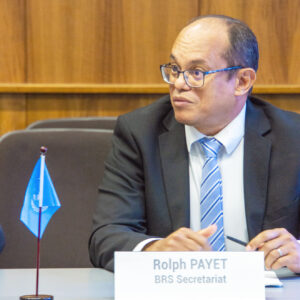Événement Conférence
The Right Not to be Exposed, a Contribution to a Toxic Free Planet | 25 Years of Struggle to be Free from Toxic Threat | Geneva Toxic Free Talks

21 Sep 2022
18:15–19:45
Lieu: Centre Administratif de Varembé & Online | Webex
On the sidelines of the 51st Regular Session of the Human Rights Council, this year’s Geneva Toxic Free Talks took place over two days of conferences and discussions, celebrating 25 years of the mandate and the struggle for the right to live in a toxic free environment.

About the Geneva Toxic Free Talks
The Special Rapporteur on toxics and human rights reports every Fall to the Council and to the UN General Assembly on issues related to his mandate. The Geneva Toxic Free Talks aim to harness the opportunity of this moment of the year to reflect on the challenges posed by the production, use and dissemination of toxics and on how Geneva contributes to bringing together the actors working in reversing the toxic tide.
On the sidelines of the 51st session of the Human Rights Council, this year’s Toxic Free Talks take place from 21-22 September — two days of conferences and discussions, celebrating 25 years of the mandate and the struggle for the right to live in a toxic free environment.
About this Session
The HRC Mandate concerning toxic and human rights was established by the former Commission on Human Rights in 1995. In addition to documenting the extent of human rights affected by the still not reversed toxic tide affecting the planet, the mandate also specified the human rights to be implemented for the protection of all segments of the population, starting with the most vulnerable. The mandate also emphasized the importance of the fundamental right not to be exposed to anthropogenic toxic substances. This discussion and the reception that followed offered an opportunity to bring together all the friends of the mandate.
This session was followed by a Reception for the 25 years of the mandate on toxics and human rights
Speakers
By order of intervention.
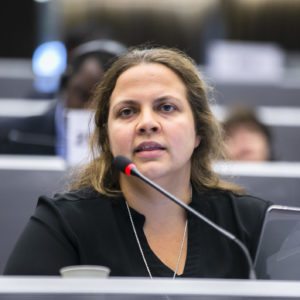
Valentina SIERRA
Permanent Mission of Uruguay to the United Nations in Geneva

Jacqueline ALVAREZ
Director, Latin America and the Caribbean, UNEP | Chief, Chemicals and Health Branch, UNEP (effective 1 October 2022)

Maria NEIRA
Director, Department of Environment, Climate Change and Health, World Health Organization
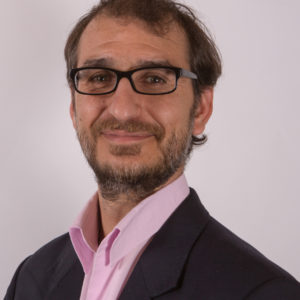
David AZOULAY
Managing Attorney, CIEL Geneva Office | Director of Environmental Health Program, CIEL
Video
Key Messages
One of the outcomes of the mandate was the question of the right not to be exposed to toxics. Yves Lador of @Earthjustice opens the session with some questions:
How much have we moved forward? What are the challenges of this mandate in the coming years? pic.twitter.com/PyJbGxgZhq
— GENeva Environment Network (@GENetwork) September 21, 2022
Summary
Welcome | Yves LADOR, Geneva Representative, Earthjustice
Over the past few years, the mandate on toxics and human rights has raised the question of the “right not to be exposed”. We now take this opportunity to reflect on how we were able to move forward in protecting people from being exposed to toxic substances, and what are the next steps and challenges that the mandate still has to face in the coming years.
Introductory Remarks | Marcos ORELLANA, UN Special Rapporteur on toxics and human rights
The topic of human rights and toxics was very controversial at the beginning, but it has now gained a place at the table of the Human Rights Council (HRC). While discussing the global right to a healthy environment (R2E) at the HRC last year and now at UNGA, some States were arguing that the content of this mandate was unclear, and that further discussion was needed to clarify the content. This conversation was settled with the adoption of the landmark resolution on R2E.
One element that flows from it is the recognition that R2E can be seen as an umbrella right that brings together the accumulated experience at the interface of human rights and the environment. There have been a number of denunciations by treaty bodies, special procedures and international tribunals on this issue connecting R2E with a range of rights, including the right to life, health public participation, food, water, cultural rights, and more. The mandate has benefited and been a part of this process. Today, we can speak with a compelling voice about the right to a toxic-free environment, the right not to be exposed to hazardous substances in relation to all these other rights and to R2E.
What are the key challenges today? Further dissemination, further awareness, and implementation. Implementation must take place at all levels – national and international. The mandate will continue these efforts. The scientific evidence we have about how humanity has exceeded the safe space of the planetary boundaries for chemical and pollution is dramatically shocking and should lead us to further action.
In relation to the R2E, the resolutions highlight the importance of the full implementation of multilateral environmental agreements (MEAs). The renewed mandate on toxics and human rights puts an emphasis on looking at the development in international instruments on chemicals and waste, including gaps and shortcomings. The mandate thus has a vision of direction, looking at the big picture, but also needs to look at the specifics, for example by engaging with the Basel, Stockholm and Rotterdam Conventions, the Minamata Convention on mercury.
At the interactive dialogue on the SR Toxics report on mercury use in small-scale artisanal gold mining, the level of engagement from Member States was higher than ever before. Many States, from all regions, expressed a strong commitment to the mandate. In the early days of the toxics and human rights debate, it was extremely polarized. But what we see now is a global embracement of the mandate, which is encouraging. The link between toxics and human rights and the significance of the mandate the need for international cooperation for the detoxification of the planet are now clearly understood. As we paused to celebrate 25 years of the mandate, let’s recognize the consensus and mobilization that the mandate was able to gather as a big achievement. Now it’s time for action.
Member States | Valentina SIERRA, Permanent Mission of Uruguay to the United Nations in Geneva
We would like to start by recognizing the work done by the Special Rapporteur, as well as the valuable contributions of the mandate over the years, on various areas such as toxics, worker exposure, metal waste, the whole life cycle of hazardous products, and the promotion of the right to science. We reiterate as Uruguay our support to the mandate.
Nowadays, we have the opportunity to work together with the Special Rapporteur, and include not only the human rights approach but also the prevention dimension of the negative impacts on human health and the environment in three key negotiations in the chemicals and waste cluster.
The start of the negotiation process on a legally binding agreement on plastic pollution that addresses the full life cycle of plastics including the marine environment in November, which Uruguay is hosting the first meeting of the INC (Geneva briefing). We are looking forward to receiving you all. It is important for us to emphasize the dimension of plastic pollution prevention and its related risks to human health as well as the adverse effects on human well-being and the environment. We consider that these and the protection of human rights should be reflected in this agreement because of the chemicals used in production, consumption, and waste management. This process should be discussed and considered in the treaty. Plastic pollution is to be tackled through a life cycle approach as it was recognized in this resolution. We should take into account the significant contribution made by workers under informal and cooperative settings, and to highlight the health impacts on workers.
We also had UNEA Resolution 5/8 that decided to establish a science policy panel that will contribute further to the sound management of chemicals and waste and to prevent pollution. The independent and intergovernmental panel will develop scientific assessments on this matter. In the face of the triple planetary crisis, two scientific panels were already established IPCC for climate change and IPBES for biodiversity – we still have a gap with pollution, and the SPP will help us to address and fill this gap. The demand and the production of chemicals continues to grow and to increase and new pollutants continue to be uncovered. Existing research has demonstrated that chemicals waste and pollution impact human health and the environment and a majority of the world is affected. Polluted air, water and soil contribute to an estimated 8.9 million deaths worldwide (Lancet Commission on Pollution and Health, 2022). We must act urgently to stop this trend.
Under the intersessional process of the International Conference on Chemicals Management (ICCM), we achieved very good results recently in IP4 in Bucharest. We are continuing this work and we expect to finalize it in 2023 in ICCM5 that will take place in Bonn. This multi-stakeholder and multi-sector approach is a forum that we need to take advantage of because it provides a unique opportunity to include the human rights approach in the new instrument. We expect to adopt a very ambitious new framework for SAICM Beyond 2020. We are looking forward to receiving the important contributions from the Special Rapporteur on all of these important negotiations.
Member States | Felix WERTLI, Head of the International Affairs Section, Swiss Federal Office for the Environment
On the Right to Science. Science allows us to know, to provide the basis and the fundamentals, with which we find in them solutions. The Global Chemicals Outlook II, the flagship report by UNEP on chemicals and waste has identified certain findings that we have not achieved what we have hoped for to manage soundly many chemicals and waste. The challenge in the report on the right to science (A/HRC/48/61) identified that we have gaps in knowledge and information on the effects of chemicals and waste on human health and environment. We don’t know everything, but we know enough. If we know it, we don’t disseminate it enough or we don’t have access. Finally, if we know it and we have access to information, we don’t do enough.
On SPP. It’s important to note that this was not our decision to launch negotiations. This process was launched for the decision to establish; the willingness of the larger community to have better access to information was strongly expressed. On the key functions outlined in the resolution:
- Horizon scanning. To check out what is going on and to look back and say we repaired what happened in the past, to look forward, and to adapt to environments and have preventive policies. The function of the assessment to look deeper into certain issues and respond to questions on the chemicals and waste cluster that will come in and then we help to identify issues of concerns coming up.
- Policy relevant, not policy prescriptive. Science has to provide policy and have governments decide what to do with recommendations.
- Geographical balance. There was a strong wish from scientists from all over the world, both south and north to participate in this panel, bringing not only knowledge it also building the realities from the ground.
- Conflict of interest issues. A key element will be transparency, with regards to scientists contributions and the linkages of where such information comes from. Information should also be made publicly available and be of high quality.
States have strongly expressed that this is a UNEP-led process with close cooperation with other actors. This shows the strong cooperation of the cluster in the UN, breaking out of the silos to bring the knowledge together, address it together, tackling both environment and health.
We hope the outcome of SPP when established is that we have better advice on timely actions to prevent and minimize adverse effects of pollution, to do more because we know what is going on, and to increase resources.
This will be a long process but it was very encouraging to see that it was the first time I’ve submitted a resolution at UNEA and was adopted with strong willingness. The benchmark to see 10 or 20 years from now is to check from time to time: do we know more? Do have we have enhanced the knowledge and have improved accessibility to knowledge? Is it more available and accessible to governments? Have you taken actions? If we can respond to that, in 10, 20 years, then you have done a great steps forward in protecting and improving the human rights situation, because we have done better than we do.
Environmental Community | Rolph PAYET, Executive Secretary, Basel Rotterdam and Stockholm Conventions
The mandate to deal with the issue of toxics is embedded in the BRS Conventions which leads to the protection of human health and the environment. It’s important to go back to this fundamental objective of these conventions in protecting these, and embedded is the concept of the right to life, health, food, shelter and all other basic needs.
When we look at the chemicals and waste agenda, we see that it touches upon all these important areas of human rights. II will go as far and say that it is one of the central themes in the ensuing discussion on human rights.
For example, when we’re talking asbestos which has not been listed yet in the Rotterdam Convention, it is an argument used by many countries as affordable housing and shelter. We face big challenges in trying to phase it out. On food, we have a huge range of chemicals [that can affect human health and the environment], some of which listed in the Stockholm Convention. We can discuss the defectiveness of the Conventions and look at the opportunities and successes, but they all touch upon the issue of human rights with respect to toxic chemicals and waste.
Education and toxic wastes. The concept of “Not in my backyard” (NIMBY) has been around since the 1960s to 1970s but now you see it happening at the national level, where people have been concerned about landfills and incinerators being build in their area, linking to the chemical industry. We have seen movements, particularly in Western Europe, but we have not seen that so much in the developing world. Having more awareness and more education is a fundamental area where we need to put a lot of effort in.
In a conference on online learning, people would ask me, “What are you doing in an online learning conference?” They were surprised at what I was trying to tell them as they were completely off the radar in terms of the issue of chemicals and wastes, and what we can do in trying to increase awareness. We need to see how we can reach out to let people know what their rights and in exercising them.
We’ve seen this happen with the issue of waste dumping, where countries send containers of waste to other countries, and countries sending them back on ships. This is a significant element in this advancement, where the Conventions have played an important role in that respect, particularly through the Basel Convention and the Plastic Amendments, which has sent a very strong signal on transboundary movement of wastes. During the COPs earlier this year, there were also amendments on electronic wastes, which was something of a big challenge to avoid developing countries being used as a dumping site. We’ve seen advances in that area, but it remains to be seen how effective these would be.
In the Stockholm Convention, in the listing of PFAS which is a component in fire retardants, where we have seen an increased among in cancers among firefighters. As such we’ve seen [the chemicals and waste agenda] also reflected in work and labor relations, and in the production of the elements.
To conclude, this mandate should not be seen in isolation or in silos. Our efforts should go into developing those connections because this is where we bring a lot of importance to this issue. Once governments and people start to realize that there is a need to address the issue of trying to achieve the right to a toxic free world, then it starts to have a lot more meaning to the people who are really concerned about the different aspects of life.
Health Community | Maria NEIRA, Director, Department of Environment, Climate Change and Health, World Health Organization
The previous presentations resonate well with the health community, particularly for the WHO. For the last years, we have been trying to use all the scientific evidence to demonstrate what have been mentioned. In one of our biggest reports which remains valid today, where we estimated the burden of diseases, morbidity and mortality associated with exposure to environmental risk factors, 25% of the global burden of diseases is linked to the exposure to modifiable environmental risk factors (Health and Environment in Sustainable Development, WHO 1997).
We have used this argument very strongly many times, but I think we need to keep using it because this remains to be a very strong health argument. At the General Assembly, everybody is talking about the climate crisis, the need for a pandemic treaty is talking about, the need for Universal Health Coverage, the importance of tackling, non-communicable diseases, I think we already have all these interventions that tackle the environment and the causes of diseases. The benefits for health will be enormous: it represents reducing air pollution which therefore reduces seven million deaths every year caused by it; it represents the benefits of sustainable food systems, producing nature and health benefits; it represents more sustainable use and production, including plastics, toxics, and chemicals we are using and abusing. This could be the most attractive, powerful primary prevention strategy ever. It corresponds to the “First, do no harm”, where prevention is better than cure.
The WHO is very happy to keep with the scientific evidence. Looking at the plastic treaty, we need to look at what will be our role and how we can contribute. We have already created reports that we need to continue providing scientific evidence and mobilizing the health community to put more pressure on governments in the name of health. The climate COP27 will be an important opportunity to do so, as well as attracting attention on the importance of prevention.
Unfortunately, with regards to health care expenditure, only 3% of resources go to prevention. This has to change. Yes, we need to keep a high level of resources for cure, treatment, better hospitals, and curative service, but unless we invest a little more in prevention and in the capacity to address emerging issues related to environmental ecosystems and biodiversity, we will not be able to provide the health services needed.
Health activism is still important. We need the conventions, the agreements, the UNEA treaties, the mobilization, and the coherent strategy to address the crisis we face. We need to demonstrate the importance of investing on recovery and not allowing conflicting commercial interest to divert us from our agenda.
Civil Society | David AZOULAY, Managing Attorney, CIEL Geneva Office | Director of Environmental Health Program, CIEL
Triple planetary crisis and human rights. One thing that was made very clear in the discussion, and what I think should be its heart, is the reflection on the triple planetary crisis. This is almost threatening to become a “sustainable development” kind of phrase, where we all use it without making sure we capture its real essence. What we’re saying is that we’re currently living a situation where there are converging crises that literally threaten the survival of the human species on Earth. It doesn’t threaten the planet, but it threatens our survival on the planet. These are not just words in long-negotiated documents. This is the scientific assessment of where we are now. Because each of those crises is urgent and life-threatening, we sometimes have the tendency to try to solve one at the expense of the other or try to address a particular issue without looking at the entirety of the impact.
This is where the human rights framework provides a possible response when we get pulled in many directions. It provides the unifying principles on how we consider and how to approach these crises. This was one of the reasons there was one call from the Special Rapporteur to develop their work with the MEAs and with the instruments trying to address effectively through legally binding provisions.
In that respect, I find it extremely encouraging to be thinking about human rights again as the framework – the umbrella – that should help us articulate our responses to the different crises.
Looking at the future, I want to highlight two aspects: one, setting the frame for our future responses, and how we conceptually think about the crises we’re trying to address; second, moving to implementation.
On implementation, a little reality check taken from the report of the former Special Rapporteur on toxics and human rights: around the world, one worker dies every 15 seconds from toxic exposure (A/HRC/39/48). This means that since we’ve started our discussions, dozens of workers have died just trying to do their job because those chemicals were not adequately dealt. That is the reality that we live in and that is the urgency that we’re facing. The Special Rapporteur, Marcos, and his predecessors have developed a very impressive body of work about how we can address this because there won’t be just one solution. A lot of work has been done in the right of science on the right of access to information which is still very far from being realized. If I ask anyone, “Do you know what chemicals go into this plastic or these products?”, nobody knows the answer. This is a major challenge and something that we absolutely have to work with. On the right to participation in decision making, it’s one thing to have access to information and it is another to participate effectively and represent your community in those decisions. These are effectively human rights approach: human rights can guide us to implement practical solutions and practical policy decisions at the national, regional, and local level.
On setting the frame. Using the example of the plastic treaty, the plastic life cycle and the plastic value chain is extremely complex – from the extraction of the fossil fuel, the building of pipeline, to transport those to the refineries, the refining, the situation in the local communities around these areas, how consumers are being exposed to a number of toxics that they don’t know anything about, to how the elimination and the treatment of those problems – at each stage, not only are there health impacts, not only are there climate impacts, but each stage of this life cycle presents specific and individual violation of human rights for different groups in different communities.
When it comes to the extraction, the refining, and the creation of these building blocks, there are many communities that live in the vicinity of those facilities. It’s not an unfortunate coincidence that those areas where those companies are concentrated is called cancer alley and for a reason. This is a place where obvious human rights violations are happening.
It’s a little sobering to get to the treaty, which is truly something to celebrate, but in the weeks, months and years of discussion, inserting a mention of human rights in the mandate has been extremely controversial. It means that there’s still a large number of countries in the world who absolutely want to separate issues of environment and issues of human rights. But, as we’ve here heard, there is no way we’re going to address environmental issues without considering, putting the rights of humans. It doesn’t mean that the rights of humans should go over the rights of nature or the impacts on the environment, but by putting the humans at the center what we will get is an increase in implementation, in awareness and then further operationalizing the principles that were developed by the mandate.
A very recent example where the human rights approach and rights-based legal arguments have literally changed the life of hundreds of thousands of people in the cancer alley. Currently, chemical producing companies and plastic producing companies are investing heavily to increase their capacity of production of these different substances that have pushed us over yet another planetary boundary. One of those companies, the Formosa company, was planning to build a huge cracker (note: What is a cracker?) to produce more PBTs in the area of Louisiana. Some communities mobilized, got together, and – not based on the NIMBY approach where it’s not going to be built in this place but elsewhere – brought in in their legal challenge elements of human rights. They have also centered their arguments around the historical violation of human rights and how these plants have been benefiting from being or placed on a former slave country and former plantations. All these arguments together with a number of others, convinced the judge to rescind the permit for that particular plant, which was going to be the biggest new facility to produce more plastics.
The arguments for that case were deeply rooted in a rights-based approach and it shows us the future of how building this right can help us make a difference. This is what we want. It’s very exciting to get a UNGA or HRC resolution or to have such discussions, but the reason we do it is to lower the number of people dying, getting sick, lower the number of children not being born because of fertility issues due to the different chemicals.
The rise in legal litigation that bring in human rights elements generally not just for toxics, but also for climate change, among others, points the direction of where this mandate could be going.
On corporate rights. One of the major challenges that we will need to address and what it will mean to implement if we want the human rights approach to succeed, is how human rights sometimes conflict with corporate rights, and corporate rights are very often taking the predominance on many decisions. The world is indeed changing. If you have listened to or watched the speech of the Secretary General of the UN in front of the UN General Assembly, these were things that you would only hear in crazy green activist meetings. That was just 10 years ago and now it’s coming out of the mouth of the Secretary General in front of the UN General Assembly, so that should give us hope, even though it may appear that it’s still difficult to get the recognition of rights-based approach in environmental MEAs.
Corporate rights are still vibrant and are still the major obstacle to the realization of human rights around the world. The world is changing and by developing the mobilization and coherent strategy, I believe that the conceptual right not to be exposed, and even just the development of the overall rights-based approach to limit exposure and to avoid exposure to toxic chemicals to all humans around the planet is the way forward and is what will probably allow us to reach the goal that we’ve all set for ourselves in the work that we do.
Response | Marcos ORELLANA
The mandate was born and first framed as one of toxic wastes, and then it was reframed so it’s no longer about just toxic waste but about the life cycle of chemicals and wastes. This opens such a range of opportunities for the mandate to engage with the various ongoing (international) processes. Some have talked about the complexity of reality and so engaging these various forms is not easy. It would mean putting on the table earmark funding for the mandate. We need to expand the capacity for the mandate to engage with activities not only at the Human Rights Council, but with the broader culture as best as it can.
This includes caseworks. Echoing what David said, there’s a lot of abstraction in the legal world of international diplomacy, but it comes down to the actual experience of people. One of the things that I try to do has been to bring the UN through this mandate closer every time I have a chance to do an official country visit or an unofficial academic or exploratory visit.
This is also in the casework, allegation letters, to send letters to the United States on the Louisiana “Cancer Alley” situation, where structural racism was exhibited or demonstrated by the disproportionate burden of pollution suffered by Black communities as opposed to White communities. The figures are startling and shocking. As such, it’s very welcome to see how the access to remedial judicial system can at times work to bring these issues into light and begin to provide relief to those who have for so many years been systematically disenfranchised and marginalized from decision making.
Echoing on the mandate being the oldest environmental mandate, we now have a new mandate on climate change and human rights and shows the collaboration between the environment mandates. It’s not just a personal delight to work with Dr. David Boyd with Ian Fry, but also on the thematics, finding synergies and spaces for collaboration. With David Boyd, we have submitted several case briefs to international and national tribunals, in cases that involve the right to a healthy environment, in cases that involve climate change,. Now with the creation of the new mandate on climate change, I am certain that we will find also new opportunities for collaboration.
Thinking about the future and what’s coming, examples are the interface between toxification and decarbonization, questions of new technologies and all technologies that are reviving, such as nuclear energy and its waste, the impacts of the electrification of mobility (not just cars but bikes as well due to the lifecycle of lithium), extraction, water, and Indigenous peoples.
There are many issues that need to be addressed as an international community to put on the solutions that are sustainable and effective. These won’t be effective nor legitimate unless a human rights-based approach is at the heart, inspiring such solutions and conversations.
Q&A and Closing Remarks
Q from Ana Maria SUAREZ FRANCO | FIAN International
With the increase of food and carburant prices increasing, but in social movements, we connect these to the agroindustrial food crisis, which are related to the three crises… As we also need the transformation of food systems while ensuring the participation of producers who are often the victims of such a system, I would like to hear your comments on the matter.
Marcos ORELLANA
The previous mandate holders have already brought in a very strong focus on corporate accountability, even preceding the UN Guiding Principles on Business and Human Rights — focusing on dirty industries relocating, on the export of dirty technology, or on the true costs of products, bringing in loopholes that still exist.
One of them is something me and my predecessors have been working on: the call for the ban on exports on highly hazardous pesticides. These are pesticides that are banned in the country of origin because of overwhelming evidence that they are dangerous, and yet these countries produce them for export to developing countries where they are used for soil cultivation, which are then reexported through cattle feed in said countries.
Here, we have a structural problem, as was pointed out, in the industrial food system. It relates to the double standards in environmental standards, globalization patterns and sustainable modes of consumption and production. The question is how do we get to the true cost of products so that the market actually works? This is not just dealing with market failure but dealing with the complexity of having human rights at the heart of the issue. The communities exposed to pesticides in the global South are the ones truly paying the price. The work is ongoing and the challenges are big, but the issues we are dealing with are interrelated. They concern models of production.
When talking about the triple planetary crisis, it has become a bit of a mantra, but let’s return to its origins. It was an attempt to take a step forward to recognize that in the environmental field and all its interrelationships, that what we’re dealing with is an existential crisis.
Valentina SIERRA
It’s now more than ever. With all the opportunities we now have and organizations starting to work, we really need to use all this in the international arena to highlight and include the human rights approach in the different instruments that we are negotiating. We are looking forward to contribute to these discussions as a country, and to work closely with the Special Rapporteur to achieve this important area to enhance human rights.
Felix WERTLI
To have the full enjoyment of the human rights, we need a strong environmental governance system. If we are not able to manage, for example, chemicals and waste across the list, we will fail to protect somebody’s human rights.
We always show how the different conventions and MEAs are related and achieve the SDGs and their targets. It would be interesting to check how human rights are related: do we show how we contribute to the full enjoyment of human rights?
I don’t know this is part of our reporting or of further communication of the MEAs. It is interesting to see that we can illustrate how international governance could enable the protection of human rights.
Rolph PAYET
I persist on my original premise that what we’re trying now is, I fear, placing human rights into silo. It is not correct as we are repeating the same problems that we’ve had before. Returning to the issue on NIMBY, it is a rights issue. Similarly, going back to my convention, my convention mentioned protection of the environment and human health. It’s a right issue. It doesn’t mention human rights but it is a link to human rights. I’m hoping we don’t make the same mistake again where we start to silo human rights issues from environmental issues, switching from one hat to another. After 25 years of the mandate, we need to explore these dimensions, similar with food and water, where we can say not only access to food and water, but access to quality food and water, and different countries are at different levels on this. We need to work on this narrative otherwise we will ourselves be subjecting to creating silos once again. This is a very fundamental issue as the UN charter itself 75 years ago that links those rights issues with the everyday.
David AZOULAY
Who produces the fertilizers? Who produces the pesticides? Who produces the endocrine disruptors? Who produces the oil and gas that is made to do all this? it’s one single industry: it’s the oil and gas industry, the petrochemical industry whose rights have clearly been given prominence over human rights over the past 50 years.
While we’re having these discussions here, I’m afraid that is a lesson that we haven’t learned. When we discussed about the plastic treaty, we still hear the majority of opinion saying, “Oh, but the solution rests with the industry.” When we hear about the science policy panel, we still hear, “Oh, without the industry, we’ll never get there.”
We have to come to terms with the idea that there is a fundamental conflict of interest between the petrochemical industry that profits and benefits from the poisoning and detoxifying of the world, and the human rights that we’re trying to protect and uphold here. The Human Rights Council and the work that is happening in the human rights [sphere] is moving in that direction. It’s helping us take this into account, but I do think that this is something that we have to reckon with if we truly want to uphold human rights.
We’re going to have to make a decision on whether corporate rights supersede human rights or not. Right now, this is my biggest concern for the future. Yes, siloing is an issue, and all others are also an issue. However, if we do everything right and we still continue to believe that corporate rights supersede human rights and that they’re more important, we’re going to pay the cost.

